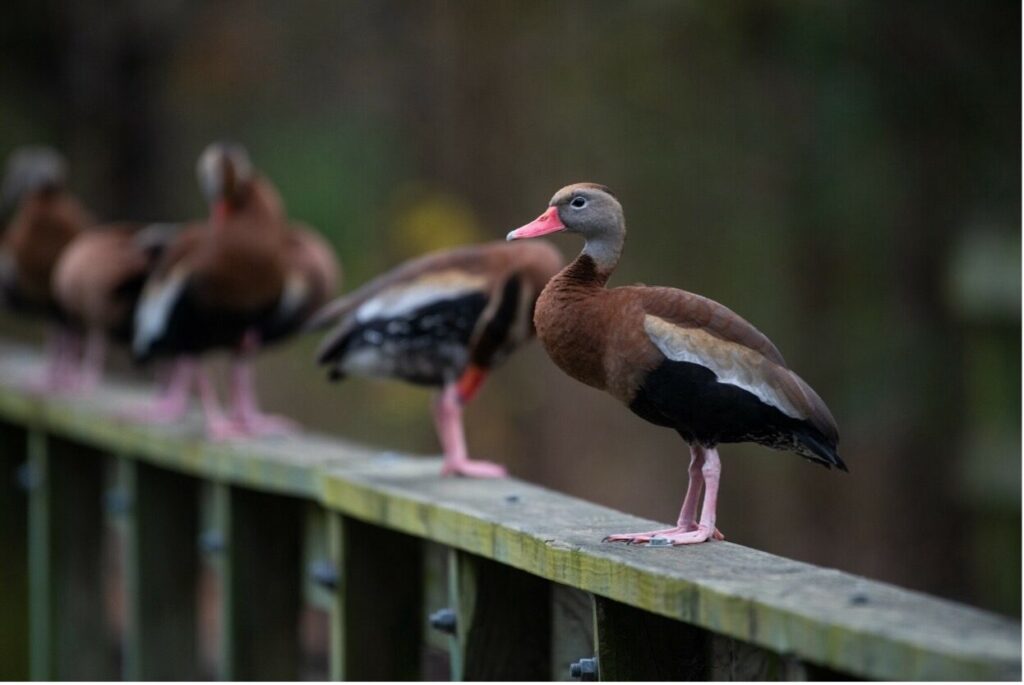Photo Credit: Adam Jackson (iNaturalist CCO)
Have you ever been walking along the San Antonio River and heard whimsical whistling? You might have encountered the beloved Black-bellied Whistling Duck (Dendrocygna autumnalis)!
These waterfowl are known for their chestnut feathers, bold black bellies, and striking, bright orange beaks. While they are about the same size as an average Mallard duck (length of 18 to 20in), their unusually long, pink legs tend to give them the resemblance of a goose. Did you know that both male and female Black-bellied Whistling Ducks look the same? This lack of sexual dimorphism, or the difference in appearance between males and females of the same species, means that both male and female ducks flaunt the same classic chestnut plumage. They can also be identified by their iconic whistling call: listen to a recording here!
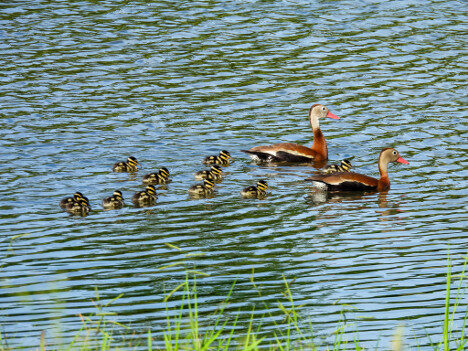
Ducklings of this species have a unique bumblebee-like black and yellow pattern to help them camouflage in the grasses by their nests, adding to their protection as well as their cuteness! Photo Credit: Vicki Miller (iNaturalist CCO)
Whistling Northward: Ducks on the Move
Black-bellied Whistling Ducks are already frequently observed in our watershed, but their range is rapidly expanding into the northern region of the United States. Primarily residing near the Gulf Coast, these ducks have been seen as far north as Quebec, Canada, and as far south as Argentina. It is theorized by some experts that the change in climate is the primary reason for this expansion in range, with warmer temperatures allowing for more availability of suitable habitats. This expansion in their range has had an interesting impact on their migration tendencies. While the species as a whole is largely considered mainly non-migratory, the populations that venture to the fringes of their habitat range or go past said range tend to have short distance migrations to areas with warmer climates during winter months.
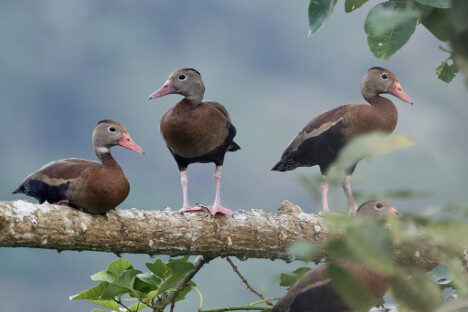
Four Black-bellied Whistling Ducks perching on tree branches. Black-bellied Whistling Ducks are on the List of Birds protected under the Migratory Bird Treaty Act. Photo Credit: Dario Taraborelli (iNaturalist CCO)
Where can you find this tree-loving duck?
These chestnut-colored ducks love to roost in the cavities of trees, earning them the former name tree-ducks. As the sun sets, they take flight from their woody nests and make their way to shallow marshes, swamps, and fields to forage for grain and insects. They also have been known to prefer harvested agricultural fields to scavenge for leftover grain as well as flooded rice paddies. But Black-bellied Whistling Ducks don’t always nest in trees, sometimes preferring soft ground surrounded by dense vegetation. And when nesting on the ground, these ducks can have some peculiar nesting habits. Some females are known to lay their eggs in the nests of other ducks; one of the largest nests recorded had 101 eggs from 17 different ducks! This is a phenomenon referred to as intraspecific brood parasitism, or birds of the same species giving the burden of raising their young to a different member of their flock by laying eggs in their nest.
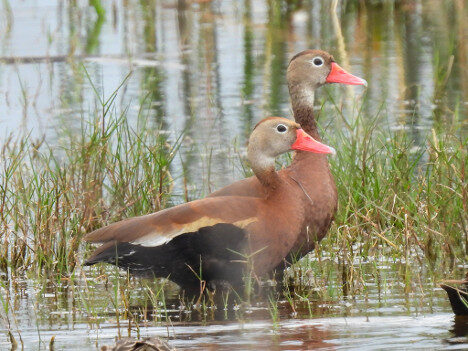
The growing presence of these ducks in our watershed is not only a sign of a changing climate — it is a reminder of the interconnectedness of all life along the river. Photo Credit: Vicki Miller (iNaturalist CCO)
Keeping Wildlife Wild
While it might be exciting to see one of these ducks in the wild, it is important to remember to keep wildlife wild. Never approach, feed, or touch wild animals—this keeps both you and the animal safe! Aquatic birds in particular are susceptible to Angel Wing Syndrome, a condition where the last joint in their wing twists outwards, impairing the bird from flying and making them susceptible to predation. This is primarily caused by people feeding them carbohydrate rich diets like bread. If left untreated, this wing deformity will remain permanent.
That being said, there are ways to safely interact with wildlife! Community science is a great way to engage locally, explore the natural world, and contribute to scientific research. Phone apps like iNaturalist or Merlin (a bird-specific app) allow you to take pictures of wildlife (at a safe distance), properly identify them with the help of AI and enthusiastic naturalists, and submit that data for research.
So, the next time you’re walking along the San Antonio River, keep an eye out for the Black-bellied Whistling Duck! Their growing presence in our watershed is not only a sign of a changing climate — it is a reminder of the interconnectedness of all life along the river. By protecting and observing these unique birds responsibly, we help ensure that the rhythms of the river—and the calls of its wild residents—continue to echo for generations to come!
Want to Learn More About Black-bellied Whistling Ducks? Here Are Some Great Resources!
- Black-bellied Whistling Duck from Cornell Lab’s All About Birds
- Black-bellied Whistling Duck from U.S. Fish and Wildlife
- Field Guide to Black-bellied Whistling Duck from Audubon
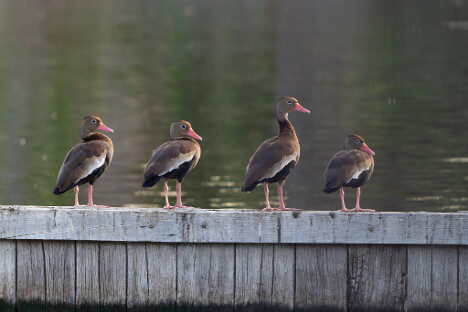
Photo Credit: Adam Jackson (iNaturalist CCO)

